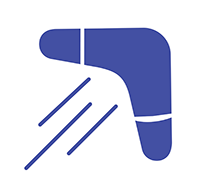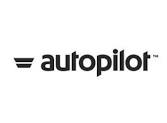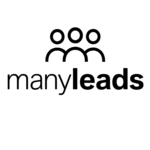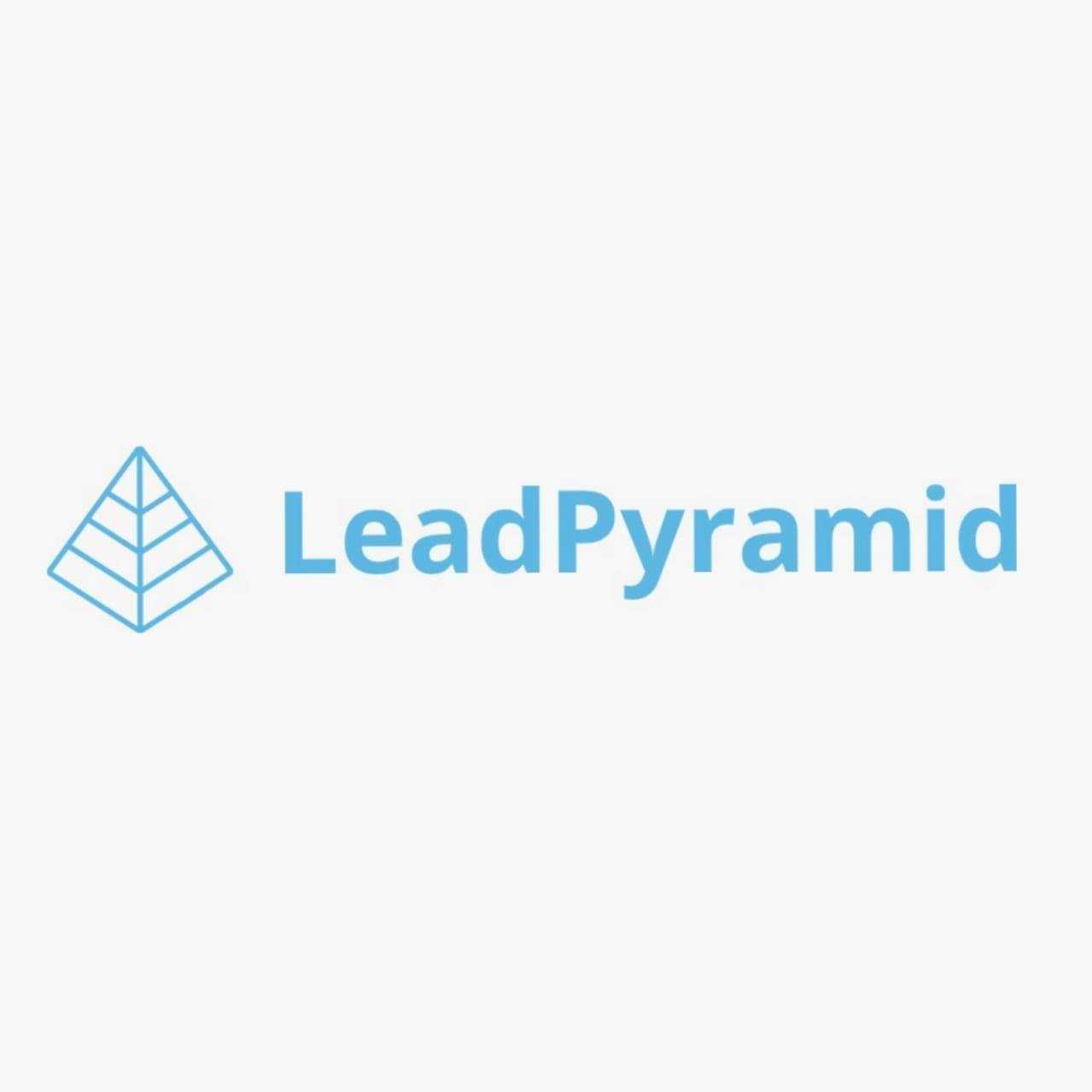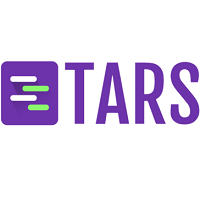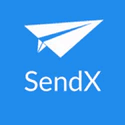Yes, most lead collecting software is accessible across numerous devices and platforms. This enables firms to acquire leads from a variety of sources, including websites, social media, and mobile devices. These tools are typically cloud-based and accessible via a web browser or mobile app, allowing users to view and manage leads while on the go. However, before buying in lead capture software, make sure it is compatible with specific devices and operating systems.
List of 20 Best Lead Capture Software
Optinly is is the popup builder for WordPress that simplifies the process of creating attractive and effective popup campaigns. With its user-friendly interface and pre-made templates, you can easily design popups without any coding or design skills...Read More Optinly
Mass Leads Maker is a lead generation software for successful online marketing strategies. With its advanced features and user-friendly interface, this platform offers chatbot creation, social proof display, gathering of online reviews, extraction of...Read More Mass Leads Maker
Linksolo is a sales-boosting solution! Our powerful software gathers real-time data from various sources to deliver precise contact information, including names, emails, phone numbers, and social media profiles of potential customers. No more time-co...Read More Linksolo
Clearbit is a marketing automation platform that transforms the way you nurture customer relationships. Using customer insights, it identifies potential leads and personalizes sales interactions. This B2C lead generation tool helps you understand and...Read More Clearbit
Brilliant Assessments solution for creating detailed and automated feedback reports. This versatile platform allows for personalized branding, advanced scoring options, and secure data management. No more coding required - streamline your assessment...Read More Brilliant Assessments
Wave Connect, the premier digital business card for professionals and companies alike. In just seconds, customize your professional brand and stand out from your competitors. With an intuitive interface and no cost to you, this platform will revoluti...Read More Wave Connect
Getyn CRM is the ultimiate customer relationship management software designed for all types of businesses. With its user-friendly interface, Getyn CRM offers a seamless way to handle customer data, automate tasks, and generate accurate analytics. Enh...Read More Getyn CRM
Easyleadz is a software designed specifically for start-ups. With our Professional plan, we are offering a special 3-month free trial exclusively for the start-up community. This plan includes 500 customized sales signals, convenient CSV export, 150...Read More Easyleadz
GetLeads is a AI platform that transforms the way businesses approach prospecting and connecting with potential clients. Our platform allows you to effortlessly discover and engage with 1,000 high-quality leads for a mere $0.04 per lead. Say farewell...Read More GetLeads
My Lead Now solution for real-time lead management. This powerful software allows you to easily generate and nurture leads while on the go or at your clients location. Our user-friendly lead tracking system simplifies the process into simple steps, g...Read More My Lead Now
W3rocks Marketing Suite solution for skyrocketing your sales and expanding your business. Our all-in-one marketing automation platform allows you to effortlessly search, send emails, and generate leads with cutting-edge features like drip feed campai...Read More W3rocks
Autopilot is a marketing automation software designed to seamlessly integrate with Salesforce, Segment, and APIs. It enables businesses to elevate their marketing strategies through customized contact management. With Autopilot, organizations can eff...Read More Autopilot
Boostools is a software designed to enhance productivity through its intuitive interface, advanced automation capabilities, and seamless integrations. This dynamic tool streamlines workflows, optimizes task management, and provides insightful data an...Read More Boostools
Lead Pyramid is the chrome extension designed to validate and verify your extracted data in real-time. Our main focus is delivering impeccable customer satisfaction and with Lead Pyramids cutting-edge data authentication capabilities, you can have co...Read More Lead Pyramid
Tars is a Conversational AI platform that revolutionizes customer experience and enhances employee productivity through intelligent automation. Trusted by over 700 top brands worldwide, Tars simplifies complex procedures into user-friendly dialogue,...Read More Tars
Nerdy Form solution for effortless form creation and integration on your website, no coding skills needed. Our versatile platform offers a variety of forms, from lead generation to quizzes and feedback, along with the option to upload files. With the...Read More Nerdy Form
Claspo is a pop-up builder designed to elevate your online presence and drive results for your marketing strategies. With advanced features, Claspo helps you retain and attract customers by showcasing your products and collecting valuable visitor inf...Read More Claspo
Avochato is a bulk SMS software that revolutionizes your communication game. Say goodbye to restrictions and hello to unlimited messaging to your customers and employees. With Avochatos efficient system, you can effortlessly send one-on-one or group...Read More Avochato
Meet SendX – solution for all your email marketing needs. This user-friendly and affordable software provides seamless management of your email campaigns. With a global customer base of over 3000 satisfied users, SendX offers unlimited emails,...Read More SendX
Sales Rabbit is a sales solution that supercharges your sales strategies and maximizes their impact. Our state-of-the-art software includes a comprehensive task management app, enabling you to effortlessly assign territories and track sales performan...Read More Sales Rabbit
Learn More About Lead Capture Software
- What Is Lead Capture Software?
- What Are The Recent Trends In Lead Capture Software?
- Benefits Of Using Lead Capture Software
- Important Factors To Consider While Purchasing Lead Capture Software?
- What Are The Key Features To Look For In Lead Capture Software?
- Why Do Businesses Need Lead Capture Software?
- How Much Time Is Required To Implement Lead Capture Software?
- What Is The Level Of Customization Available In Lead Capture Software?
- Which Industries Can Benefit The Most From Lead Capture Software?
- Conclusion
What Is Lead Capture Software?
Lead capture software is a powerful tool that allows businesses and organizations to capture, store, and manage potential customer or client information. With the market's ever-increasing rivalry, businesses are continuously looking for new leads to increase sales and expand their consumer base. This is where lead capture software comes in handy.
At its foundation, lead capture software collects potential leads' contact information using a variety of methods such as website forms, landing pages, social media campaigns, and more. Businesses not only save time and effort, but they also avoid losing potential consumers. One typical characteristic of lead capture software is the ability to store and arrange acquired data in a central database.
This allows firms to easily access and handle information as needed. Furthermore, some advanced lead gathering software includes lead scoring and segmentation to help firms prioritize and target the most relevant prospects. One of the most significant benefits of employing lead capture software is its ability to interface with other marketing and sales tools, such as customer relationship management (CRM) systems.
This provides for a smooth flow of data and guarantees that all leads progress properly through the sales funnel. When choosing lead capture software, look for features like form and page customization, real-time lead notifications, lead tracking and analytics, and lead nurturing capabilities. It is also critical to select software that is user-friendly and can be seamlessly incorporated into your current marketing and sales operations.
What Are The Recent Trends In Lead Capture Software?
Lead capture software is a useful tool that allows organizations to collect and organize information about future customers or leads. In today's fast-paced digital market, firms must have an effective lead capture strategy in place to remain competitive and boost sales. As technology advances, lead capturing software improves and adapts to the changing needs of businesses.
We will look at the most recent trends in lead capturing software that purchasers should keep in mind when making a purchase.
1. AI And Automation: One of the most important advancements in lead capture software is the incorporation of artificial intelligence (AI) and automation. AI-powered lead capture software can analyze data and detect patterns to efficiently target potential leads. Automation enables firms to set up automated answers and nurture prospects through sales funnels, saving time and effort for their sales teams. This trend is especially useful for businesses that generate a large volume of leads and require a streamlined strategy.
2. Multichannel Integration: In today's omnichannel world, lead capture software must interface with a variety of communication channels, including social media, email, and messaging applications. This trend enables firms to acquire leads across several touchpoints and organize the data in a single platform. Lead capture software that integrates many channels can also deliver a personalized experience to potential customers, resulting in increased engagement and conversions.
3. Gamification: Gamification is a prevalent trend in the lead capture software market over the last few years. It entails utilizing game-like aspects to engage potential clients and collect their data. Businesses may acquire leads in an engaging and dynamic manner by including aspects like as contests, quizzes, and rewards. This trend not only gathers leads, but it also allows firms to create relationships with future clients.
4. GDPR Compliance: With the implementation of GDPR (General Data Protection Regulation) in Europe and comparable restrictions in other areas of the world, lead capture software has evolved to comply with data privacy rules. This trend assures that firms employing lead capture software obtain and store customer data responsibly and with their permission. GDPR compliance offers potential consumers the confidence to disclose their information, which can lead to more qualified leads.
5. Mobile First Approach: The use of mobile devices is increasing, with more people accessing the internet via smartphones. As a result, lead capture software must take a mobile-first strategy, which means it is optimized for mobile devices. This trend enables businesses to acquire leads from consumers browsing their phones while also providing a seamless experience for potential customers, raising conversion rates.
Benefits Of Using Lead Capture Software
Benefits of Using Lead Capture Software: Lead capture software can help firms create and convert more leads. It simplifies the process of gathering and arranging potential consumer information, allowing organizations to easily convert leads into sales.
Here are some major advantages of employing lead capture software:
1. Improves Lead Gathering Efficiency: Traditional lead generating methods, such as manual data entry or paper forms, are time-consuming, error-prone, and difficult to track. Lead capture software automates the process of gathering lead information, making it more efficient and precise. This helps firms to collect a greater number of leads in a shorter period of time.
2. Organizes Lead Data: Lead collection software allows firms to keep their lead data structured and easily accessible. It enables lead categorization and segmentation, making it easier to target certain groups and personalize marketing campaigns. This also makes it easier to collect and analyze lead data, giving you useful insights for future lead generating plans.
3. Improves Lead Quality: Lead capture software enables organizations to qualify leads in real time. This means that potential clients are checked and analyzed before they reach the sales funnel, ensuring that only high-quality leads are followed up on. This improves the efficiency and efficacy of the sales process, resulting in a greater conversion rate.
4. Compatibility With Other Products: Lead capture software frequently interfaces with other marketing and sales tools, such as CRM systems and email marketing software. This enables seamless data transfer and a more complete picture of lead information. It also removes the need for manual data entering and improves the accuracy of leads.
5. Improves Lead Nurturing: Lead capture software enables organizations to automate lead nurturing procedures such as sending follow-up emails and creating targeted content. This helps to keep leads engaged and intrigued, which increases their chances of becoming clients. Overall, it enhances the customer experience and strengthens the relationship between the company and potential customers.
Important Factors To Consider While Purchasing Lead Capture Software?
When it comes to choosing lead capture software for your company, there are a few key elements to consider in order to make an informed purchase. After all, this software will be a valuable asset in your marketing and sales activities, assisting you in capturing and converting leads into customers.
To help you understand the possibilities and choose the finest lead capture software for your organization, keep the following crucial aspects in mind:
1. Lead Generation Capabilities: The major goal of lead capture software is to generate leads for your company. As a result, it is critical to assess the lead generation capabilities of any product you are evaluating. Look for customisable lead capture forms, landing pages, and email marketing connections to help you attract and convert qualified prospects.
2. CRM Integration: For efficient lead management and nurturing, your lead capture software and customer relationship management (CRM) system must work seamlessly together. This ensures a smooth transfer of lead data and streamlines your lead management process. Check to see if the lead capturing software you're contemplating is compatible with your present CRM or provides its own CRM solution.
3. Automation And Personalization: Another important element to examine is the degree of automation and personalization provided by the lead capture software. Look for tools like automatic lead scoring, lead segmentation, and targeted email campaigns that will allow you to target and interact with leads at the right time and with the correct message.
4. User-Friendly Interface: Lead capture software should be simple to use and navigate, especially for those who lack technical knowledge. Consider demos or free trials of various software solutions to assess the user interface's intuitiveness and usability.
5. Analytics And Reporting: Analytics and reporting skills are critical for determining the effectiveness of your lead generation operations. Look for software that provides thorough analytics and reporting on key metrics like lead conversion rates, page views, and email open rates. This enables you to make data-driven decisions and continuously improve your lead collection approach.
6. Pricing And Scalability: Lead capture software prices vary depending on the features and capabilities provided. Consider your budget and the most crucial aspects for your business. Consider your company's future growth and whether the software can scale with your requirements.
By taking these criteria into account, you will be able to make an informed decision when selecting lead capture software for your business. Remember to study reviews and seek suggestions from other organizations to ensure that you select a dependable and successful service. Finally, selecting the appropriate lead capture software can have a major impact on your entire marketing and sales success.
What Are The Key Features To Look For In Lead Capture Software?
When evaluating Lead Capture Software, seek for crucial features that can improve your lead generating and conversion process. These features will save you time and work while also ensuring that potential leads are adequately captured and nurtured.
Here are the key characteristics to look for when selecting the best Lead Capture Software for your organization.
1. Customizable Forms: A decent Lead Capture Software will allow you to design customizable forms to collect vital information from your prospects. This includes sections like name, email, phone number, and any other pertinent information dependent on your target audience. The option to create forms also provides you more control over the information you collect, resulting in more effective lead segmentation and personalized communication.
2. CRM Connectivity: Any Lead Capture Software should provide seamless connectivity with your Customer Relationship Management (CRM) system. This ensures that all lead data collected is instantly synced with your CRM, eliminating the need for manual data entry and guaranteeing that no leads fall through the cracks.
3. Responsive Design: As more people use mobile devices to access the internet, it is critical for your Lead Capture Software to be responsive. This means that forms and landing pages should be customized for all screen sizes and devices, resulting in a more seamless user experience and increased lead conversions.
4. Lead Scoring: Lead scoring is an extremely useful feature that allows you to prioritize and discover the most qualified leads. This feature assigns scores to leads based on their actions and behavior, providing a clear indicator of which leads are most likely to convert. This allows you to focus your time and resources on prospects that are more likely to convert, therefore increasing your sales.
5. A/B Testing: A/B testing, also known as split testing, is a function that allows you to compare several versions of your forms and landing pages to see which performs better. This can include trying out different designs, copy, and call-to-action buttons. A/B testing provides vital insights into what resonates with your target audience, allowing you to continually enhance your lead generation efforts.
6. Lead Management: The ability to successfully manage your leads is critical to successful lead conversion. Look for Lead Capture Software that has capabilities such as lead segmentation, nurturing, and tracking. These tools will help you organize your prospects and move them through the sales funnel, boosting the likelihood of conversion.
7. Analytics And Reporting: To assess the efficiency of your lead capture activities, ensure that the Lead Capture Software you select includes powerful analytics and reporting features. This should include important analytics like as conversion rates, form abandonment, and traffic sources. These insights can assist you in identifying areas for improvement and making data-driven decisions to maximize your lead production.
Why Do Businesses Need Lead Capture Software?
First and foremost, businesses require lead capture software to properly collect and manage potential client information. This is an important phase in any sales process since it helps organizations to nurture prospects and move them along the sales funnel. Furthermore, lead capture software saves organizations time and resources by automating the lead collection process.
This allows firms to focus on other vital duties while the program handles lead generation and qualification. Furthermore, lead capturing software gives useful insights and data on leads, enabling organizations to better understand their target population and customize their marketing tactics accordingly. This not only raises the likelihood of converting leads into clients, but also aids in making sound business decisions.
In today's digital world, people expect businesses to provide a seamless and personalized experience. Lead capture software helps organizations do precisely that by giving tools for lead segmentation, lead scoring, and tailored engagement with potential consumers. Lead capture software can also be combined with other sales and marketing technologies, such as CRM systems and email marketing platforms, to build a unified and effective lead management system.
Finally, lead capture software is a cost-effective solution for businesses of all sizes since it eliminates the need for manual lead collecting and lowers the danger of losing potential consumers. In the long run, this can result in improved conversion rates and, thus, increased revenue.
How Much Time Is Required To Implement Lead Capture Software?
The time required to implement lead capture software varies based on a number of factors, including the product's complexity, the size of your firm, and the level of customization necessary. However, in most circumstances, the implementation process can last anywhere from a few days to several weeks. Smaller firms with simple lead capturing software can finish the deployment process in a matter of days.
This covers duties like installing the software, integrating it with your website or CRM, and teaching your team how to use it properly. Larger firms, on the other hand, with more complex lead collecting tools, may need a longer implementation time. This could entail further customization, data migration, and training for a larger staff. As a result, the implementation procedure for these firms may take several weeks to guarantee that everything is properly configured.
A well-defined plan is essential for ensuring that the implementation process runs smoothly and on schedule. This includes determining your company's specific requirements, creating realistic timetables, and assembling a dedicated team to oversee the implementation process. Finally, the time necessary to establish lead capture software will be determined by your company's specific requirements. It is critical to collaborate closely with the software vendor and maintain open communication to guarantee a successful and timely implementation that satisfies your business requirements.
What Is The Level Of Customization Available In Lead Capture Software?
Lead capture software is a useful tool that helps firms collect and manage potential customer information. When comparing different lead capture software alternatives, the level of customization provided is an important consideration. Customization can have a significant impact on how well your organization captures and converts leads. At its core, customization in lead capture software refers to the ability to modify the program to your individual business requirements and branding.
This might cover everything from the style and layout of lead capture forms to the specific fields and questions contained within the form. One area of customization to consider is the design and branding options available. Some lead collection software allows for extensive customization, enabling businesses to develop forms that are consistent with their branding and website look.
This not only provides a consistent visual experience for potential customers, but it also helps to establish trust and credibility in your brand. Another key part of customisation is the option to include fields and questions on lead capture forms. This enables firms to collect particular information from leads that is relevant to their sector or target market.
For example, a clothes store may request a customer's size or preferred style, whereas a B2B software company may request job titles or company size. In addition to visual and data customization, some lead capture software includes extensive customization features like conditional logic. This feature enables businesses to display various questions or form fields based on a user's previous responses, resulting in a more personalized and usable experience.
Overall, lead capturing software offers a wide range of customizing options. To efficiently capture and convert leads, organizations must examine their specific needs and select software that provides the appropriate level of customisation. The correct customisation options, whether in terms of branding and appearance, data gathering, or advanced features, can have a big impact on the success of your lead generation efforts.
Which Industries Can Benefit The Most From Lead Capture Software?
Lead capture software is an essential tool for firms that rely on capturing and managing leads to increase sales and income. Lead capture software can benefit a wide range of businesses, from tiny startups to major corporations.
Here are some of the industries that will gain the most from lead collection tools.
1. Real Estate Industry: In the competitive real estate market, lead capture software can be a game changer. Agents may efficiently track and nurture new clients by capturing and organizing leads from a variety of sources, including websites, social media, and open houses. This enables for more efficient lead management and increases the likelihood of conversion.
2. E-commerce Industry: E-commerce enterprises rely largely on lead generation to increase sales. E-commerce enterprises can use lead capture software to collect and manage leads from website visitors. Using lead collection forms and automated email marketing, e-commerce enterprises may convert leads into loyal consumers, improving overall revenue.
3. Consulting And Coaching Industry: Professionals in the consulting and coaching industries frequently generate leads through webinars, events, and online material. Lead capture software may make this process easier by allowing users to develop personalized landing pages, capture leads, and track progress. This saves time and effort, allowing for a more targeted approach to nurturing new clients.
4. Healthcare Industry: Lead capture software can assist hospitals, clinics, and private practices attract new patients. Advanced features such as lead scoring and segmentation enable healthcare practitioners to efficiently target and convert potential patients into full-time clients. This also helps to increase patient engagement and satisfaction.
5. Software And SaaS Industry: Acquiring and managing leads is critical for software and SaaS companies to grow and succeed. Lead capture software may be smoothly integrated into their current systems, making it easier to follow leads and engage them with tailored marketing campaigns. It also provides significant data regarding lead behavior, allowing organizations to improve their marketing methods.
Conclusion
Finally, selecting the correct lead capture software can significantly assist your organization by streamlining the lead generation and conversion processes. In our detailed buyer's guide, we have covered all of the critical things to consider while making this crucial decision. Understanding your business needs and goals, assessing the features and cost of various software solutions, conducting extensive research, and reading reviews are all critical steps in determining the best fit for your organization.
We also emphasized the important advantages that lead capture software may provide, such as increased efficiency, higher lead quality, and improved cooperation between sales and marketing teams. We also reviewed the many forms of lead capture software, such as form builders, landing page generators, and lead management systems, and how each can meet distinct business requirements.
It is critical to remember that there is no one-size-fits-all answer when it comes to lead generation software. Every organization has distinct requirements, and it is critical to carefully assess each choice to determine which one best meets your individual needs. We hope this guide has provided you with useful ideas and information for making an informed decision.
Remember to thoroughly demo and test the product before making a final decision, and don't hesitate to contact customer support if you have any questions or concerns. Investing in the appropriate lead capturing software can help propel your company to new heights, and we wish you luck in your hunt.
Lead Capture Software FAQ's
Can Lead Capture Software Be Accessed Across Multiple Devices And Platforms?
Is Lead Capture Software Future-Proof And Adaptable To Emerging Technologies Like AI, Blockchain Or IoT?
Lead capture software is always improving, and providers must prioritize keeping up with emerging technologies. Many lead capture software systems currently include AI and automation features to improve productivity and accuracy. In the future, we can expect greater developments in areas such as blockchain and IoT connectivity. Rest assured, lead capture software will continue to adapt and evolve in order to remain relevant in a rapidly changing technological context.
Is There A Free Trial Offered To Assess Lead Capture Software Before Committing?
Yes, many lead capture software companies provide a free trial period so that potential clients can test their platform before making a commitment. This trial period normally lasts 14-30 days and allows users to test the software's features and functionality to see if it fits their requirements.
Some companies also release a limited version of their software for free on a regular basis. Before purchasing software, it is recommended that you take advantage of free trials to confirm that it is a good fit for your organization.
Does Lead Capture Software Offer Data Security Features And Meet Regulatory Compliance Standards?
Yes, most lead collection software includes data security measures to protect the safety and confidentiality of your leads. This includes data encryption, access controls, and scheduled backups. Many of these programs also adhere to regulatory standards such as GDPR and CCPA, giving you peace of mind and ensuring compliance with data protection legislation. It is critical to conduct research and select reputed lead capture software that values data protection and compliance.
Can Lead Capture Software Integrate Seamlessly With Existing Tools And Platforms?
Yes, most lead collection software works seamlessly with your existing tools and platforms. This covers widely used customer relationship management (CRM) systems, email marketing platforms, and sales automation technologies. Integrating with these technologies allows you to streamline your lead capture process and keep all lead data in one location. This can save you time and effort while increasing the overall effectiveness of your marketing and sales activities.

